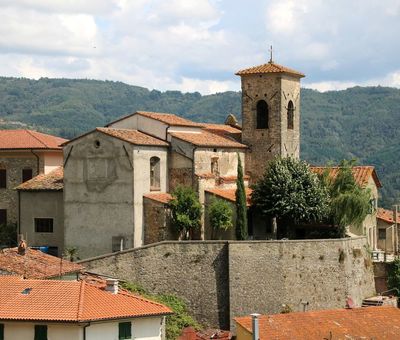A love story
The profile of the mountain is redolent of a woman lying asleep, or, if you want to believe the legend, dead. The folk traditions speak of a love story without a happy ending, for it involves two lovers who could not marry; indeed, he was hounded from the village and hid in the woods of the nearby Val di Lima. Years passed; he did not return, and she was married off to the young son of a well-to-do family. One night, though, she escaped and went in search of her true beloved. It was winter: the wood was thick, impenetrable. A violent blizzard descended on the area, and she, exhausted and weakened by the cold, died in the wood without ever finding her lover. It is to this story that a hamlet of Marliana, Femminamorta, probably owes its name.
That sound of the organ
Marliana is home to countless little churches, and many of them contain an organ. This good luck is due to two Pistoiese families who could claim to be among the most important organ manufacturers in the world: the companies Agati and Tronci, which were later merged in a single business. Thus began a company that extended its reach to markets in France, the Middle East and Latin America. There are therefore a great many organs to be found in Marliana’s churches, but the most prestigious would be the one built in 1903 for the Dutch church in Livorno – destroyed in the Second World War, it was known in its time as the finest in Tuscany – and the majestic instrument made in 1895 for the church of Nostra Signora del Sacro Cuore di Gesù in the province of Lucca.
An app lest we forget
Endless are the stories of the mountains and their beautiful, forgotten places: it is essential that we transmit them and keep them alive somewhere in popular consciousness. With this in mind, a project was born: “The Mountains that speak: stories of forgotten places”. A collection of oral memories from those who have lived in the mountains for years and years, a collection of tales about these parts, of how they were in times past, of natural remedies, of bread, of fountains and local festivals. You can listen to them via audio files, thanks to technology developed and honed by a startup company that linked “the voices” to particular GPS coordinates (https://bepart.net/app). Anyone arriving in the area can download the free app and listen to them speak. Furthermore, in order to boost the relationship between the stories of the mountain-dwellers and the mountains themselves, a group of artists have donated some of their own works, which have been installed across the territory.



